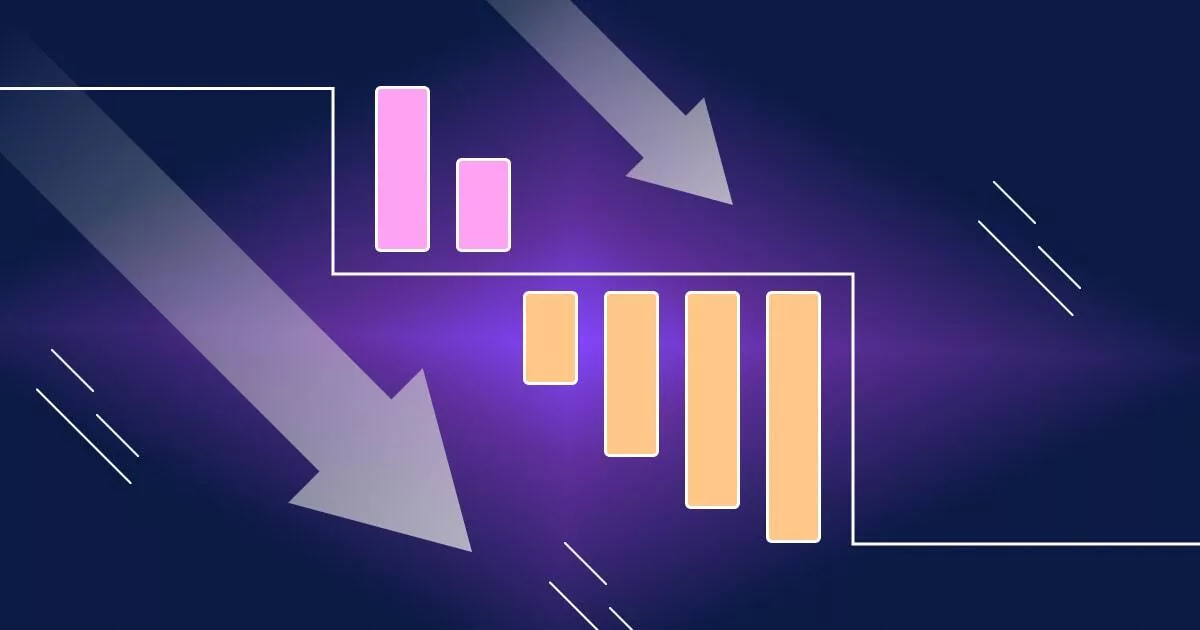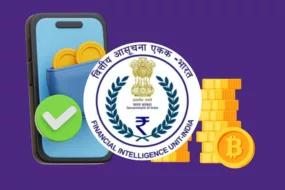
A nation’s economy goes through different phases, such as inflation, recession, and stagflation. While the first two economic phases are quite common, stagflation is rarely witnessed.
Inflation indicates a higher cost of living, and recession leads to a slow pace of growth, and you may already know how these conditions impact the economy. However, compared to them, stagflation is relatively rare and can lead to challenging times for a nation.
This leads us to the question of what stagflation is and what causes it. Here is everything you need to know.
What Is Stagflation?
Stagflation is an economic phase that indicates higher inflationary pressure, a slow pace of growth, and an increase in the unemployment rate. It leads to lower purchasing power due to higher prices of consumer goods and services. Due to the combination of effects it has on the economy, compared to inflation and recession, it is hard to tackle.
To control inflation, the government can increase the interest rate and reduce the money supply. During a recession, the government can take measures to increase money circulation via favorable monetary policy. However, for stagflation, if the government increases the interest rate to control inflation, it would impact the economy that already has a slow-growing pace and higher unemployment rate.
The impact of stagflation:
- As availing of goods and services becomes expensive, it increases the overall cost of living.
- When this combines with unemployment, it really squeezes the economy, especially citizens.
- People have to spend their life savings to fulfill their needs.
- Businesses find a shortage of supply and revenues, and with that, they fire employees–worsening the situation.
Stagflation is a mix of inflation and recession, and thus it needs careful consideration from the government to avoid a rise in inflationary pressure or to trigger the economy to slow down even more. Governments typically must take measures to curb stagflation more via fiscal policy than solely relying on monetary policy. To see the impact of stagflation on a country, the misery index is used, which adds the inflation rate to the unemployment rate.
What Is the History of Stagflation?
There was a time when economists used to believe that stagflation was an impossible economic event and was more theoretical than practical. The term stagflation was first used in the year 1965 by Iain Macleod, a British politician. He gave a speech on the economic stress in the UK in front of the House of Commons, where he referred to stagflation. He was the first to say that stagflation is the combined impact of inflation + stagnation.
Later in the 1970s, the United States experienced this economic phase when there were major policy changes by the Nixon government, which encouraged an increase in the supply of money by the Fed while trying to control the prices.
The implementation was on point, but in 1973-74, oil prices soared and disrupted the supply chain globally. This resulted in double-digit growth in inflation and also increased the level of unemployment, with less money left for consumers to spend on basic needs.
It has been noted that even during a recessionary period, with time, inflation tends to increase. Take an example of the financially challenging times of 1987 (the market crash), 2008 (the global financial crisis), and the recent pandemic. While economic growth has been impacted negatively during these times, over the years, inflation has only increased. The price you would pay today for 1 kg of sugar is likely to be higher than in 1987 or 2008. That’s because of a Y-O-Y increase in the inflation rate.
What Causes Stagflation?
Now that you know what stagflation is, let us see what causes stagflation. It is a combination of some triggers that disrupt economic conditions, as below.
1. Oil and energy prices
The first time that stagflation was recognized to have impacted an economy, as mentioned above, was in the 1970s, with the rise in oil prices being the main culprit. A rise in oil and energy prices leads an economy to take up more debt to fulfill the consumption demand, which means less budget available to spend on actual consumer needs.
2. Supply chain disruption
Stagflation is a condition of higher inflation and lower growth, which means that while there is a demand for goods and services and the prices are soaring, there is a lack of supply which leads to a tough time for consumers. It becomes hard to avail of the goods and services and pay higher prices as the affordability reduces.
3. Change in economic policies
When a government implements a fiscal policy that leads to a higher cost of producing goods and services and reduces the profit + a quick increase in the money supply, which can increase the demand, it leads to stagflation. The reason is that as consumers have more money to spend, the demand will rise, but as production is expensive, the supply will fall behind. The outcome is a price rise which ultimately leads to higher inflation.
How Is Stagflation Different From Inflation?
After understanding stagflation, if you are wondering how it is different from inflation, here is your answer.
| Stagflation | Inflation | |
| Meaning | Stagflation is referred to as higher inflation, higher unemployment, and lower economic growth. | Inflation is a period of higher growth, higher demand for goods and services, higher wages, and higher prices. |
| Causes | Stagflation occurs due to supply chain disruption, a rise in oil and energy prices, and changes in monetary or fiscal policy. | Inflation is a cause of higher wages, higher demands, higher costs of production, and lower supplies. |
| Duration | It is rare. The last time it occurred was in the 1970s. It is believed to have begun in the 1960s, and the phase did not end till the 1980s. | It is quite common for an economy to feel frequent inflationary pressure. It does not last long and is calculated on an annual basis. |
| Impact on economic growth | Stagflation leads to an economy hitting rock bottom. It takes years to bounce back and achieve normal GDP growth. | Inflation leads to higher demand and spending, reflecting higher GDP growth in the short run. In the long run, with monetary controls, the impact reduces. |
| Ease of recovery | It is a challenging move to curb stagflation as it can slow down the economy further. It takes years to recover the economy from stagflation with appropriate fiscal and monetary policy changes. | It is comparatively easier to recover. Typically monetary policy changes are enough to control the money supply and curb inflationary pressure. |
How to Financially Prepare for Stagflation
Once you know what stagflation is in economics, it is crucial to plan for such phases to avoid walking on a tightrope. Here is how you can achieve that.
1. Save more and curb expenses
It is vital to save money for challenging times. Make a habit of saving a certain amount each month to ensure you have the funds if the economy goes southward. For this, you need to reduce your expenses.
You can adopt methods like the 50:30:20 rule, where you spend 50% of your income on needs, 30% on wants, and save the rest 20%. You can customize this based on your preferences.
2. Avoid taking more debt
Taking debt nowadays has become quite easy with the ease of getting credit cards. However, taking debt adds to your liabilities, which you will have to pay regardless of the economic condition of your country.
Thus, avoid taking debts until it is the last resort, use your credit wisely, and if you have existing debts, prioritize paying them back.
3. Increase your income sources
As Warren Buffett says, an individual should have seven income sources, and the money should work even when you are sleeping. In today’s time, it is better to have more than one income source. Apart from your main job, have some hobbies that pay you or a side hustle that can help you save more money.
In tough economic conditions, if you are laid off, having a cushion of a side hustle or venture can help you survive.
4. Build an emergency fund
Building up an emergency fund for uncertain times has no alternative. To avoid financial distress, save at least 6 to 12 months of your monthly salary as an emergency fund. You can keep these savings in liquid funds such as a bank fixed deposit to ensure ease of access.
5. Diversify your investments
Never put all your eggs in one basket. For example, if you are heavily invested in equities, and the market falls during stagflation, you may lose your entire investments. However, if you have diversified your investments in equity, debt, and alternative investments like gold, the negative correlation between them will offset the downfall in one asset.
Thus, ensure that your portfolio mix includes the right types of asset classes as per your preference and risk tolerance.
6. Invest for long term
While there are likely to be numerous fluctuations in your portfolio in the short term, in the long run, these fluctuations do not have any impact. Thus, while investing, always have a long-term view.
It can help you remain invested during stagflation, and when the market and economy recover, your portfolio should too. So, do not panic about short-term market volatility and stay invested.
Will Stagflation Happen Again?
Economists believed that post the COVID-19 pandemic, stagflation would arrive due to supply chain disruptions and rising oil prices. The GDP growth slowed down due to the pandemic effect, but soon the global economy regained, and we already witnessed soaring inflation in 2022. However, the overall economic condition is on track, and while the experts are advocating for a looming recession, the probability of stagflation is almost nil.
After the 1970s, stagflation hasn’t hit the world with measures for employment and supply chains in place. Currently, there are concerns over Russia vs. Ukraine, the rise in Covid cases in China, and supply chain disruptions, but whether or not it would invite stagflation has no certainty. If it happens, it would be quite challenging to control it. However, the chances of stagflation are very thin.
Conclusion
Stagflation is a tough economic phase for a nation and its people. It leads to higher inflation with a slow pace of growth, and the rising unemployment rate worsens the situation. However, there are some measures that you can undertake to survive such times with ease, such as saving and investing regularly. The essence lies in being mindful of your finances and being prepared.
FAQs
1. Why is stagflation bad?
Stagflation is bad as it is a combination of higher inflationary pressure, lower economic growth, and a higher unemployment rate. Unlike inflation or recession, where monetary policy can aid the situation, during stagflation, the same measures can worsen the case. Also, it takes years for an economy to bounce back from stagflation, which makes it worse.
2. Which industries do not get impacted by stagflation?
While a majority of industries get impacted by stagflation, a few that serve the basic needs of consumers, such as healthcare, utilities, consumer staples, etc., are the last to get impacted by it. There would always be a requirement for medicine and medical services, food, and electricity or water. This makes this industry stagflation-proof.
3. What happens after stagflation?
After stagflation, the economy starts to recover — The government implements long-term measures in place in terms of fiscal policies to increase the employment rate and overall growth. Businesses start to rehire people and increase production, resolving the supply chain shock and the prices of goods and services finally reduce.





